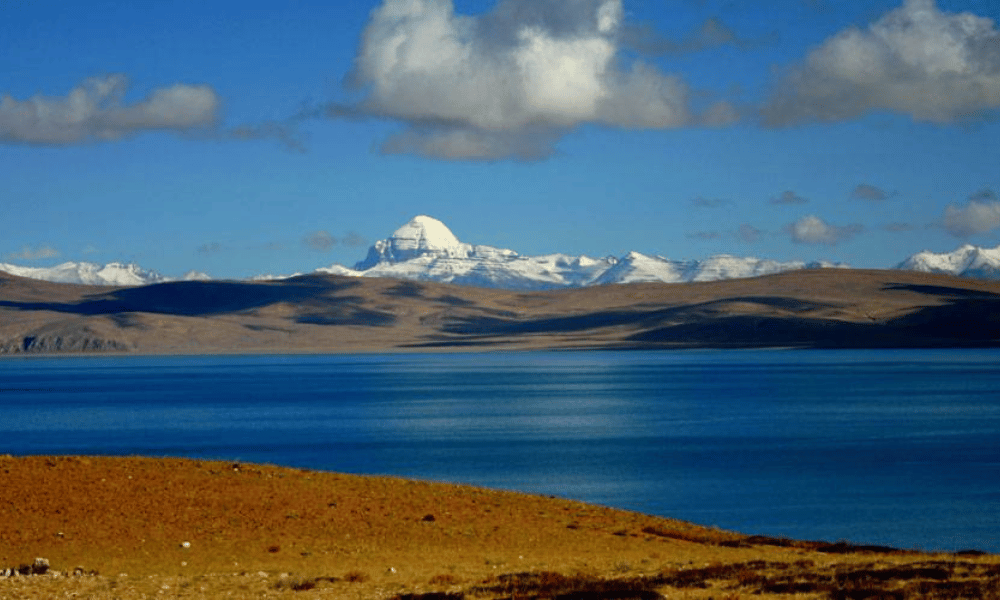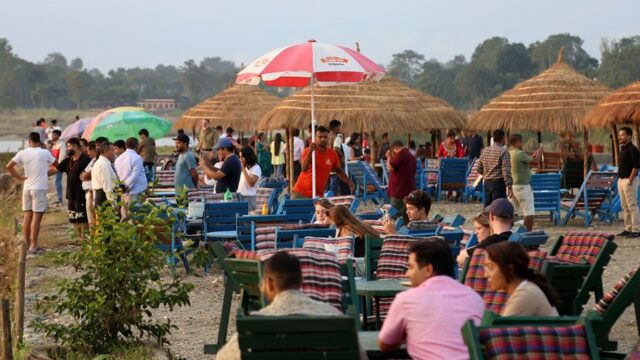Nestled in the lap of the mighty Himalayas, Lake Mansarovar stands as one of the most revered and breathtaking destinations in the world. This sacred lake, situated at an altitude of 4,590 meters in Tibet Autonomous Region of China, has been a significant pilgrimage site for centuries, attracting devotees from Hinduism, Buddhism, Jainism, and Bonpo traditions. Besides its spiritual significance, Mansarovar has become a focal point for adventure seekers, nature lovers, and cultural enthusiasts, making it a multifaceted tourism hotspot.
Lake Mansarovar, known as “Mapam Yumtso” in Tibetan, is believed to be the source of four of Asia’s great rivers: the Indus, the Brahmaputra, the Sutlej, and the Karnali. According to Hindu mythology, the lake was created by Lord Brahma, the creator of the universe. It is said that a dip in its holy waters purifies the soul and washes away sins, offering a path to salvation. For Buddhists, Mansarovar is associated with the legendary lake Anavatapta, where Queen Maya is believed to have conceived Buddha. The lake’s crystal-clear waters, reflecting the snow-capped peaks, are considered a symbol of purity and tranquility.
The journey to Mansarovar is as enchanting as the destination itself. The most popular route for international travelers is via Nepal. Pilgrims and tourists can take a flight to Kathmandu, where they embark on a scenic drive through the lush landscapes of Nepal, leading to the Tibetan border. From there, the journey continues overland, passing through the mesmerizing terrain of the Tibetan Plateau. This route not only offers spectacular views but also allows travelers to acclimatize to the high altitude gradually.
The region surrounding Lake Mansarovar is rich in cultural heritage. Travelers have the opportunity to interact with the local Tibetan communities, gaining insights into their unique way of life. Traditional Tibetan villages, monasteries, and nomadic settlements dot the landscape, offering a glimpse into a culture that has remained largely unchanged for centuries. The Tirthapuri Hot Springs, located near Mansarovar, is another cultural gem. Pilgrims visit these springs to bathe in the mineral-rich waters, believed to have healing properties.
For adventure enthusiasts, the journey to Mansarovar is nothing short of a thrilling expedition. The rugged terrain, high altitudes, and unpredictable weather conditions make it a challenging yet rewarding experience. Trekkers can explore the surrounding mountains, including the revered Mount Kailash, which is often considered the abode of Lord Shiva. The Mount Kailash trek is a spiritual and physical endeavor, attracting trekkers from around the globe who seek both adventure and spiritual fulfillment.
Lake Mansarovar is an ecological marvel, home to diverse flora and fauna. The region’s unique ecosystem supports various wildlife species, including Tibetan antelopes, wild yaks, and numerous bird species. The lake itself is a haven for migratory birds, making it a paradise for bird watchers. The pristine environment of Mansarovar, with its clear waters and unpolluted air, offers a serene escape from the hustle and bustle of modern life.
In recent years, there has been a growing emphasis on promoting sustainable tourism in the Mansarovar region. Efforts are being made to minimize the environmental impact of tourism activities. Local authorities and tourism operators are working together to ensure that the natural beauty and cultural heritage of the area are preserved for future generations. Eco-friendly accommodations, waste management initiatives, and responsible tourism practices are being implemented to protect the fragile ecosystem of Mansarovar.
The best time to visit Mansarovar is during the summer months, from May to September when the weather is relatively mild and the roads are accessible. During this period, the temperature ranges between 10°C to 25°C, making it ideal for both spiritual and adventure activities. The winter months, from November to March, bring extreme cold and heavy snowfall, making travel to the region challenging.
While the region is remote, there are various accommodation options available for travelers. Basic guesthouses and lodges are scattered along the route, providing necessary amenities. In recent years, more comfortable and eco-friendly accommodations have been developed, catering to the needs of international tourists. These accommodations often offer breathtaking views of the lake and the surrounding mountains, enhancing the overall experience.
Lake Mansarovar is more than just a destination; it is a journey of spiritual awakening, cultural exploration, and natural wonder. Its sacred waters, majestic landscapes, and rich cultural heritage make it a unique and unforgettable experience for every traveler. As tourism to Mansarovar continues to grow, it is crucial to embrace sustainable practices to preserve its pristine environment and cultural integrity. Whether you are a pilgrim seeking spiritual solace, an adventurer in search of thrill, or a nature lover yearning for tranquility, Mansarovar welcomes you with open arms and promises a journey of a lifetime.






